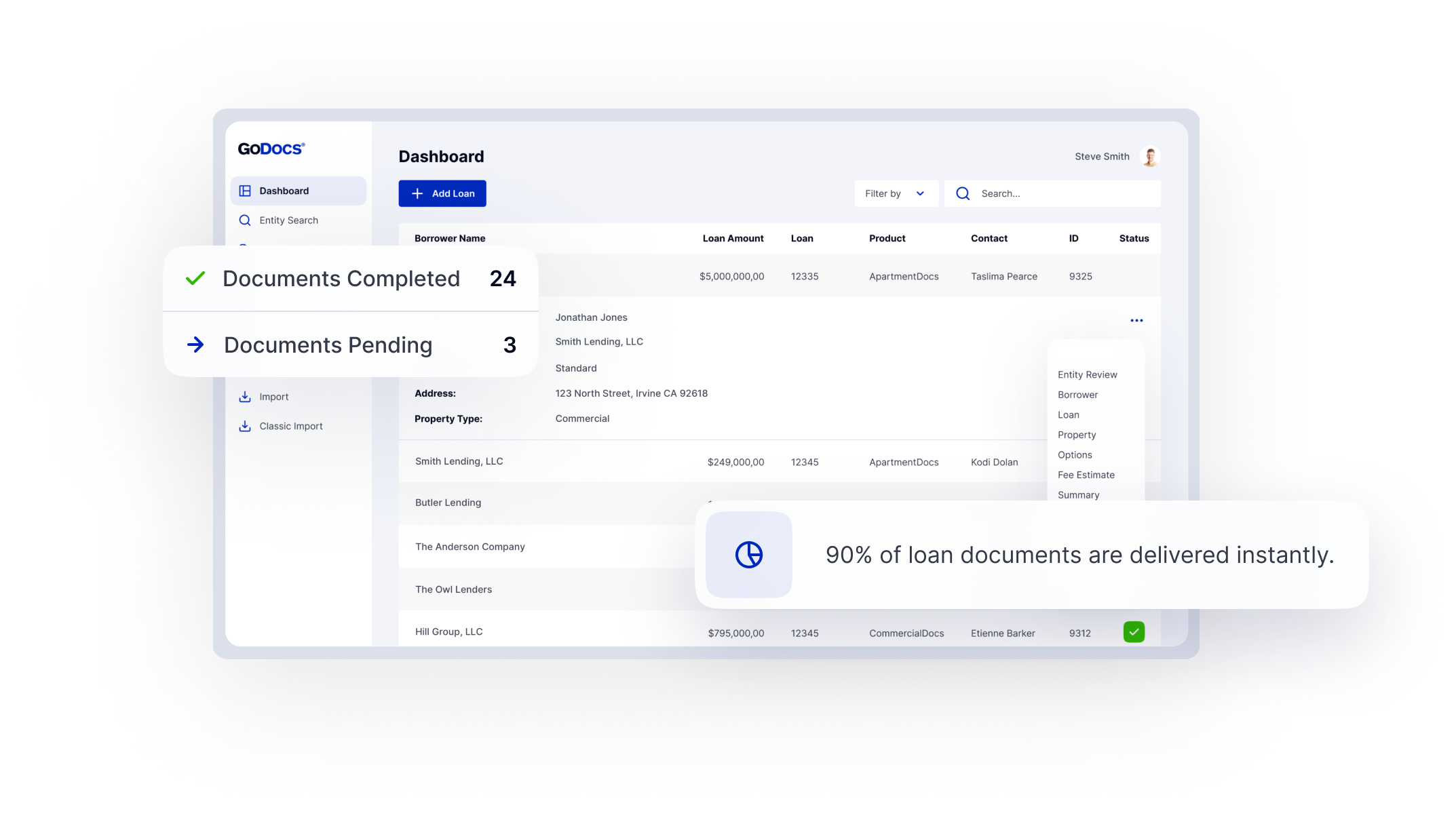The Operational Friction Every Insurance Lender Knows Too Well
Insurance companies have long played a significant role in commercial real estate (CRE) lending, often providing large, customized loans with long-term horizons. But as the lending landscape evolves, so do the challenges faced by the lenders themselves.
Rising capital charges and slower refinancing windows are putting pressure on lenders’ underwriting decisions, asset monitoring, and workout strategies. It demands more precision and responsiveness than ever before.
Further, many life company lenders are still working within outdated, heavily manual systems that were originally designed for policy administration. These legacy platforms create friction at nearly every stage, from underwriting through closing. Lenders are thus forced to work around siloed data, disconnected workflows, and limited third-party integrations.
The result becomes slower execution, greater risk, and less time to focus on high-value deal structuring.
The biggest frustrations insurance-based CRE lenders face today are:
The insurance industry, including life insurers, carries approximately $134 billion in technology debt and $66 billion in process debt.
— HFS Research, 20251. Customization Requires Constant Legal Review
Life insurance lenders, especially senior originators, investment officers, and portfolio managers, often work on highly customized loan agreements with unique covenants tailored to each borrower and asset.
While this level of flexibility is a competitive advantage, it also creates operational drag.
Every variation typically requires involvement from external legal counsel, leaving lenders stuck in long review cycles that slow down deal velocity. Instead of focusing on structuring or borrower relationships, lenders spend valuable time managing redlines, coordinating approvals, and navigating escalating legal costs.
Automation handles complex customizations without the need for outside legal counsel.
Learn More >>
2. Legal Costs Hit Harder Per Deal
Unlike high-volume banks, insurance lenders typically handle fewer transactions. This means every deal carries a larger share of overhead. For the individual lenders at life insurance companies, this often translates into greater scrutiny over deal economics and added pressure to justify legal spend.
Custom drafting, redlining, and back-and-forth with outside counsel skyrocket legal fees, which can strain internal approvals or even delay borrower commitments.
Regulatory fines for commercial lending violations have exceeded $10 million per institution, with penalties for failing to meet fair lending, truth-in-lending, and disclosure requirements.
— CFPB & OCC Enforcement ActionsTo stay competitive, many lenders are now advocating for tools that streamline the documentation process and reduce legal reliance, so they can focus on what they do best: profitable loans.
Automating document sets and modifications can dramatically reduce traditional legal fees.
Learn More>>
3. Regulatory Compliance Pressure Falls on the Lender’s Shoulders
For life insurance CRE lenders, regulatory compliance is an ongoing and intensifying challenge. Lenders are responsible for ensuring every loan file meets complex and evolving regulatory requirements. This includes strict rules around fair lending, disclosure, risk assessment, and auditability.
Operating with manual or disconnected systems makes it difficult to maintain accuracy and keep up with documentation demands. Lenders face the constant pressure of meeting deadlines and providing clear audit trails while managing high volumes of deals. Any misstep or incomplete record can result in enforcement actions and operational setbacks.
The right solution includes built-in guardrails for all 50 states, backed by real estate attorneys.
Learn More >>
4. Need For Consistency Across Large Portfolios
Most insurance companies have back-office infrastructure optimized for portfolio management and risk analysis, not CRE lending. As a result, lenders often rely on patchworked processes involving spreadsheets, PDFs, legacy templates, and email threads to move deals forward.
This lack of systemized origination causes variations in contract terms, formatting, or regulatory language across a loan portfolio from numerous internal and external stakeholders.
80% of commercial loan documents contain errors that require revisions, leading to costly rework and potential legal risks.
— National Association of Credit ManagementVariance increases the likelihood of enforcement challenges, missed covenants, and post-close disputes.
Automation delivers standardized, repeatable document quality for every transaction.
Learn more >>
Drive Your Insurance-Based CRE Lending Toward Sustainable Success
While life insurance CRE lenders face these growing challenges, banks, private lenders, and credit unions are adopting technology that enables faster, more accurate, and more efficient lending.
This widening gap puts insurance lenders at risk of falling behind in compliance, operational efficiency, and market relevance. Without timely modernization, opportunities to improve speed, reduce errors, and better manage risk may be lost.
As a lender, understanding your institution’s current position and advocating for the right tools is essential to maintaining your effectiveness and competitiveness.
If you’re looking to understand where life insurance lenders stand compared to other financial institutions, learn how automation can make a difference, and explore practical steps to improve your processes, this guide offers a straightforward overview to support your efforts.






